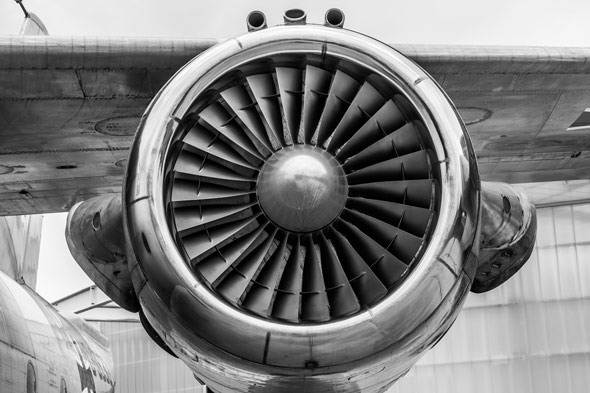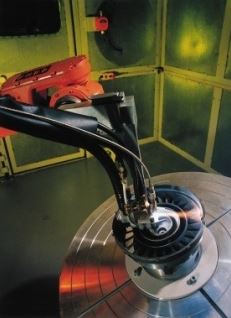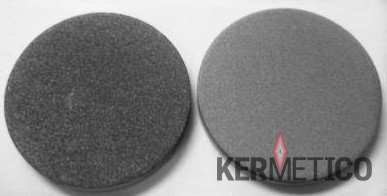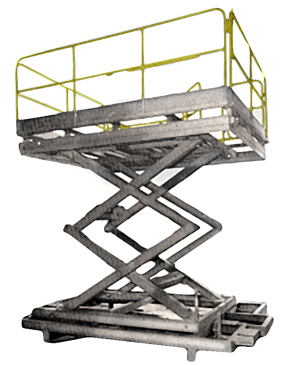
The Aerospace industry requires aircraft to fly fast, far and safely. Metal/thermal spray coatings help to achieve this.
- Metal Spray coatings have been applied to turbine blades, protecting them from extreme temperatures and ensuring increased reliability for extended periods of time.
- Landing Gear utilises HVOF spray technology as the preferred method of coating to replace hard chrome plating, protecting the equipment from the extreme forces experienced during take-off and landing. It is also more environmentally friendly than using Hexavalent 6 chrome plating.
Applications

Did You Know?
There are over 100 applications within a single jet engine where Metal/Thermal spray is used?
Aerospace examples include, but are not limited to:
- Abrasive Coatings (to ensure a sealing surface between the turbine blade and their housing).
- Rocket Combustion Chamber – Thermal-barrier coating of Zirconium Oxide.
- Oxidation Resistance – High-pressure nozzles coating of Cobalt–Molybdenum.
- Particle Erosion – Missile nose cones protected by Calcium Zirconate.
- Fuel Pump Components – Abrasive/erosive wear resistance protected by Tungsten Carbide and Aluminium Oxide.
Thermal Spraying Equipment Providing Engineering Coatings

The images above show Aerospace parts Plasma and Arc Sprayed to protect against high temperatures.
Thermal sprayed coatings have been a recognised and trusted solution for engineering coatings in the aerospace industry for many years.
Stringent requirements in the aerospace industry result in demands for high quality coatings, combining accuracy, repeatability and above all safety, which is what Metallisation and its equipment regularly and consistently delivers.
Vector Aerospace is an industry leader in the global aerospace maintenance, repair and overhaul market with repair facilities in Canada, the United States, France, the UK, South Africa and Australia. At its Fleetlands - Gosport site it has a state-of-the-art engine repair service facility fitted out with Metallisation thermal spray equipment. Vector Aerospace repairs and overhauls engines for Rolls Royce, Pratt and Whitney and Honeywell. Vector Aerospace took ownership of the thermal spray cell, originally purchased by Pratt and Whitney Canada UK, in 2000. The facility included a sound attenuated thermal spray booth, robot, tilt and turn turntable, Plasma and Arc Spray systems.
Certified, Wear Resistant and Thermal Barrier Coatings:
The system was originally designed to produce aerospace certified coatings, including wear resistant and thermal barrier coatings (TBC’s) and was perfectly suited to Vector Aerospace’s needs. A brand new extraction system was installed to meet the latest environmental requirements and ensure the highest quality coatings. Metallisation was involved in the re-commissioning of the system and has continued to provide ongoing support through its annual calibration service and its bi-annual servicing.
Flame Spray System
Vector Aerospace has been so pleased with the equipment that in 2012, to complement the existing facility, they purchased an additional system from Metallisation, in the form of an automatic powder flame spray system. The MK74-PC Flame Spray system enabled them to produce abradable coatings and enhance its engine repair service. The MK74-PC Flame Spray system was delivered, installed and commissioned by Metallisation’s experienced engineers. The unit is fully automated, mass flow and PC controlled and has distributed I/O to maximise reliability and repeatability of the system. The touch screen HMI allows very simple operator control.
The thermal spray cell enables Vector Aerospace to apply a full range of coatings including, metallic bond coats, repair materials, ceramics and abradables. The cell primarily incorporates the Metallisation PCC mass flow controlled Plasma system and the Metallisation 140/S250 Arc Spray automatic system. The tilt and turn turntable provides an additional two axes to the six axis robotic manipulator, ensuring that all areas of the component are accessible for the coating.
In a typical metal spray application 0.004” – 0.008” of Ni/Al bond coat would be sprayed at around 0.002” per pass using the Arc Spray system. A topcoat of up to 0.014” chromium carbide alloy would then be applied at around 100µ per pass to provide wear resistance to the engine component, using the plasma system.
Abradable coatings have a thin bond coat of Ni/Al Arc Spray coating applied before a Nickel/Graphite 85/15 topcoat is applied with the MK74-PC powder Flame Spray equipment.
The Mark 74-MC pistol is useful for applying a wide range of coatings for thermal barriers, wear resistance and as a dielectric. This pistol utilises an oxygen and acetylene fuelled gas mixture, which means it is capable of spraying ceramic coatings, as well as all the full range of metal powders. Since thermal spraying processes produce, as a by-product, noise, dust and radiant energy, it is necessary to contain the equipment in an extracted soundproofed area. The Metallisation thermal spray cell has interlocked extraction to meet the needs of the application and local environmental regulations. With environmental and safety pressures upon industrial processes, this form of thermal spraying cell provides an opportunity to produce high quality coatings in a manner which is simple, clean and safe for the staff operating the system and is also environmentally friendly.
Chris Prior, Repair Services Manager at Vector Aerospace Engine Services UK, says: “We, at Vector Aerospace, have enjoyed a friendly and professional customer/ supplier relationship with Metallisation which I am confident will continue in the future. We can always rely on them for immediate response to technical enquiries, and the hardware is still robust and reliable after 13 years of service.”
Repair of Aluminum and Titanium Aerospace Components Using the Kermetico HVAF Process to Spray Al or Ti Coatings

The repair of high-value aerospace components is essential for maximizing part lifetime, reducing operating costs, and maintaining a high level of readiness. Cold spray technologies provided a way to repair some of the most expensive parts, but there are still no practical and economical repair methods for many aerospace components made of aluminum and titanium.
Kermetico HVAF Specialized coating technology and equipment add aluminum and titanium material to worn or damaged areas with outstanding quality:
- Kermetico's HVAF Al repair coatings exhibit wrought-like microstructures with near theoretical density values.
- Kermetico HVAF Ti coatings for the aerospace overhaul are dense and well-bonded.
- The HVAF systems deposit coatings onto temperature-sensitive materials such as glass or polymers.
The Kermetico equipment will be good for general re-build of worn or corroded components that have been removed from aircraft during overhaul.
The Kermetico HVAF Process Deposits Dense Non-Oxidized Aluminum Coatings
Kermetico HVAF equipment melts Aluminum. But an oxygen depleted flame and inert gas prevent Al from oxidizing, both in the jet and on the surface, and the high-speed jet creates a high bond and low porosity coating, so the HVAF SL system deposits excellent quality Al coatings and Al layers with no nozzle clogging and no oxides in the coating structure.

HVAF Aluminum Aerospace Coating Microstucture x100
Kermetico HVAF STi System for Thermal Spraying Titanium and Alloys onto Aerospace Parts
The Properties of Ti and Titanium Alloy Coatings
Titanium is not an easy material to spray. It reacts with Oxygen and Nitrogen at relatively low temperatures. That is why most developers were trying to deposit it with a vacuum or an inert gas atmosphere. These approaches make the coating extremely expensive. Kermetico have chosen a different approach, creating an inert atmosphere inside the high velocity thermal spray gun.

A Titanium Coating has been Deposited onto the Left Substrate by Our AK7, onto the Right One – by Our STi
The particular design of this unique thermal spray system keeps Ti powder in the inert gas atmosphere all the way through the thermal spray gun until it meets the substrate and bonds there.
The Thermal Spray Restoration of Worn-out Aviation Titanium Alloy Parts
Designers use titanium alloys widely in aircraft, ships, and spacecraft due to their high tensile strength to density ratio, high corrosion resistance, fatigue resistance, high crack resistance and ability to withstand moderately high temperatures without deformation.
Many attempts have been made by different research bodies to repair titanium alloy parts with cold spray, laser cladding, and other techniques. Most of them have failed and had to resort to applying alternative materials onto the worn areas. As far as we know, the question of the MRO restoration of titanium parts is still open. With the introduction of the functional titanium STi system, we provide an instrument for high-quality repair of titanium alloy workpieces.
Aircraft Maintenance Platforms

One of six access platforms 3.048m x 2.6m (10’ x 8’6”) used for servicing aircraft. The specification was first to thoroughly grit blast the steelwork and then to metal spray pure zinc to a minimum thickness of 150 microns (0.006”). This will afford protection against abrasion, impact, weathering and atmospheric pollution.
Airport Baggage Docks

Several terminal baggage docks have been metal sprayed with a 28E Non-Slip coating at an international airport.
The same coating has also been used on airport walkways to provide a non-slip surface for passengers.

A 28E coating is a thermally sprayed coating that can be applied with a rough texture and has excellent non-slip properties, while being extremely hard and resistant to wear.
The coating provides:
- A suitable level of grip to avoid personal slips or industrial skidding.
- Comparable corrosion protection to aluminium, as used in aggressive environments.
- Easy application by a long-standing process, covered by international standards.
The resultant coating is corrosion resistant and because of its durability, site owners can be confident that once applied, they can forget about rust or slipping for many years. The same coating has also been used on flight decks to dissipate the heat produced by aircraft, all while providing an anti-slip surface to aid with landing.
Electrically Conductive Aerospace Coatings

One particular application sees the Metal Spraying of electrical heater elements onto carbon fibre parts to efficiently stop ice formation on aeroplane wings at the touch of a button.
Click Here for More Information.
Paris CDG Airport - Al-Zn-In Coated Panels

An example of corrosion protection using the aluminium, zinc and indium alloy has been trialled by Aero ports de Paris at Charles de Gaulle (Roissy) airport. Aero ports de Paris, responsible for the maintenance of most of the Roissy airport infrastructure, recognised deterioration in some of the concrete panels at the airport and sought a long-term corrosion protection solution. The precast concrete panels, which are 2.6 x 2.8m of lightly reinforced 8cm thick units, form the underside of the concrete viaducts carrying road traffic to and from a busy terminal complex. Run-off from de-icing salt has led to an important level of chloride in the panel concrete. Although the panels are not structurally significant, spalling could present a hazard to passing traffic.
Following a stringent review and testing of the panels to establish the deteriorating condition, an anode was applied to the panels in a test area. After grit blasting the panel surface, the anode of aluminium/zinc/indium alloy was applied by a Metallisation arc spray system to an application thickness of 300 microns. The anode connection plate in the centre of each panel is clearly visible by its red anode cable, which would not normally be on show in a typical commercial application. The other cables run to connections to the re-bars and to embedded reference electrodes. As this is a test site it was necessary to install monitoring equipment. This was to allow the connection between the anode and cathode to be interrupted for measurement of electrochemical performance. After two years the system appears to be well adapted to treat corrosion of the viaduct panels and is deemed to be a successful test.
For more information on Metal Spray equipment or consumables, call us on 07 3823 1004 or email us via our contact form.


